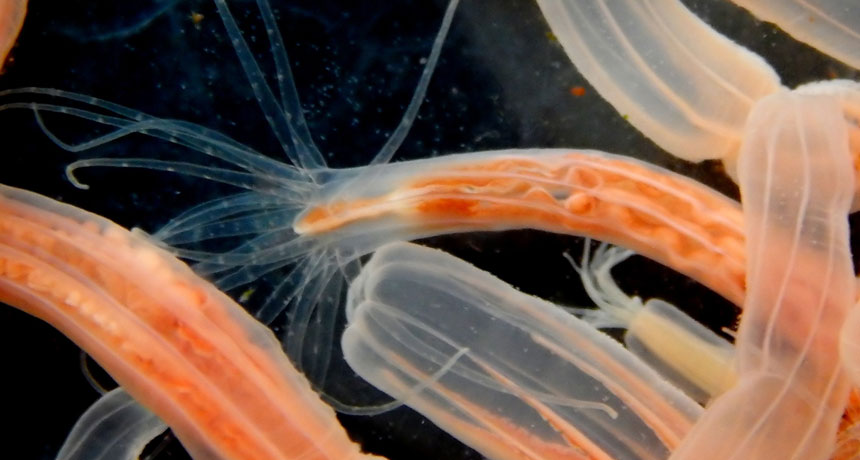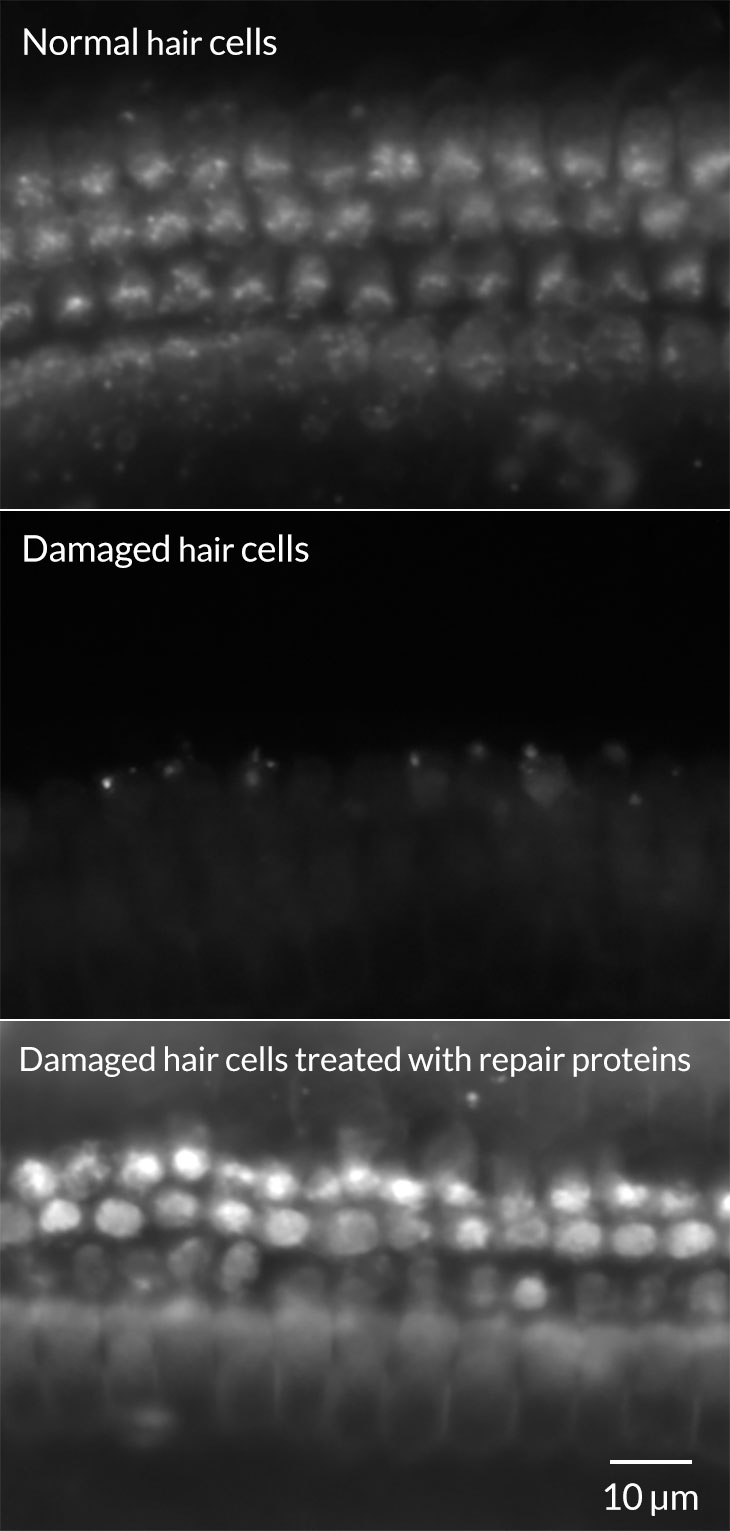
HEAR YE, HEAR YE Starlet sea anemones reproduce by tearing themselves in two and regenerating their missing halves. Researchers are hacking this special ability to find possible treatments for hearing loss.
G. Watson
Understanding sea anemones’ exceptional healing abilities may help scientists figure out how to restore hearing.
Proteins that the marine invertebrates use to repair damaged cells can also repair mice’s sound-sensing cells, a new study shows. The findings provide insights into the mechanics of hearing and could lead to future treatments for traumatic hearing loss, researchers report in the Aug. 1 Journal of Experimental Biology.
“This is a preliminary step, but it’s a very useful step in looking at restoring the structure and function of these damaged cells,” says Lavinia Sheets, a hearing researcher at Harvard Medical School who was not involved in the study.
Tentacles of starlet sea anemones (Nematostella vectensis) are covered in tiny hairlike cells that sense vibrations in the water from prey swimming nearby. The cells are similar to sound-sensing cells found in the ears of humans and other mammals. When loud noises damage or kill these hair cells, the result can range from temporary to permanent hearing loss.
Anemones’ repair proteins restore their damaged hairlike cells, but landlubbing creatures aren’t as lucky. Glen Watson, a biologist at the University of Louisiana at Lafayette, wondered if anemones’ proteins — which have previously been shown to mend similar cells in blind cave fish — might also work in mammals.
Watson and colleagues mimicked traumatic hearing loss in mice hair cells by depriving them of calcium ions, which are crucial for maintaining cell structure and transmitting sounds. Within a few hours, the normally stiff, hairlike structures that detect sound “looked like spaghetti,” he says.
Researchers bathed the damaged hair cells in a cocktail of anemone repair proteins. After an hour, the cells showed remarkable improvement compared with untreated cells. Proteins rebuilt molecular tethers that bundle hair cells and act as gatekeepers for calcium ions. As a result, the cells absorbed more fluorescent dye — an indication of how well calcium flows into the cells.
What’s more, researchers identified a bevy of mice proteins that are analogs of anemones’ repair proteins. But mammalian versions work less effectively than anemone proteins, if at all. More research could point the way to one day harnessing human repair proteins, Sheets says.
Moving forward, Watson plans to investigate the ability of the anemones’ proteins to repair damaged cells in the ears of living mice. “If we could get to those hair cells before they commit to die and treat them, there’s a possibility we could reduce hearing loss,” he says.






